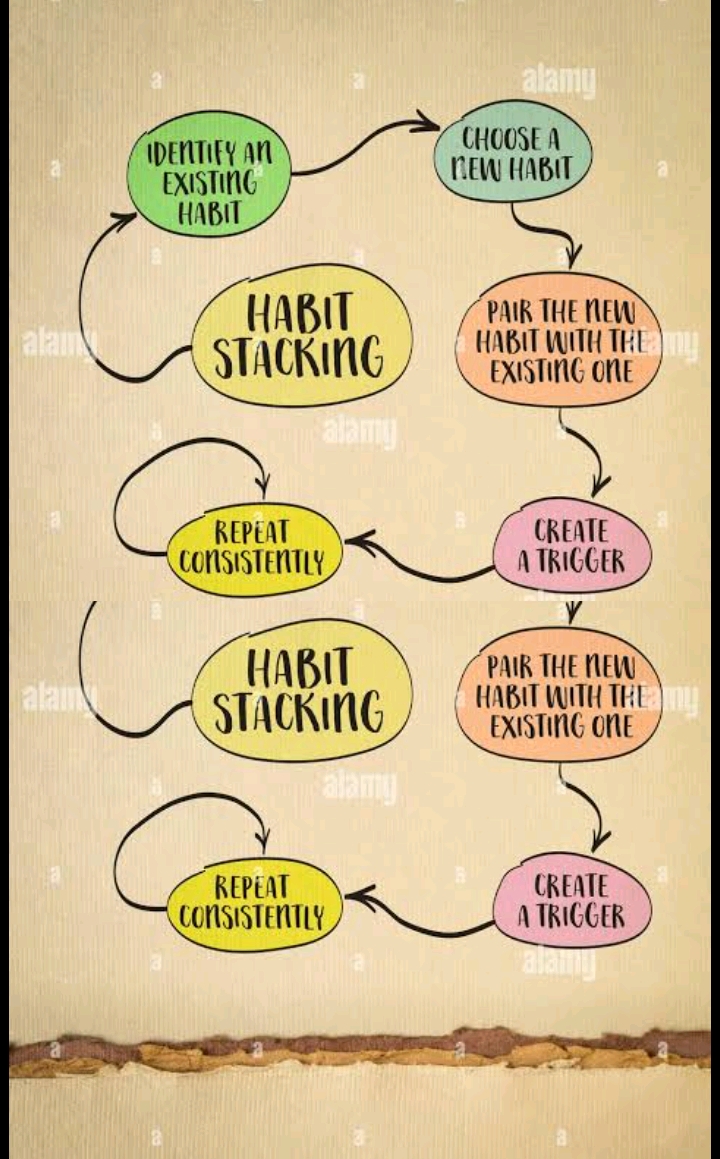HOW TO BUILD HABITS THAT ACTUALLY STICK.
We’ve all been there—starting a new habit with enthusiasm, only to abandon it weeks (or even days) later. Whether it’s exercising, reading more, or waking up early, building habits that actually stick can feel like an uphill battle. But the good news is that forming long-lasting habits isn’t about willpower alone—it’s about using the right strategies.
Here’s a step-by-step guide to making your habits stick for the long run.
1. Start Small.
One of the biggest mistakes I have ever made, and I know others has once made, or are still making us, is aiming to high, too fast when building new habits. Instead of saying, “I’ll read for an hour every day,” start with “I’ll read for five minutes before bed.” Small habits are easier to maintain and gradually grow into bigger ones.
> Tip: Want to start exercising? Do just 5 push-ups a day. Once that becomes easy, increase it.
2. Anchor Your Habit to an Existing Routine.
Habits are easier to form when they’re tied to something you already do. This is called habit stacking. For example:
Brush your teeth → Then floss one tooth
Brew your morning coffee → Then meditate for one minute
Finish dinner → Then take a 5-minute walk
By linking a new habit to an old one, you create a natural trigger that reminds you to take action.
3. Make It Ridiculously Easy.
A habit should feel so easy that it’s impossible to fail. Instead of committing to 30 minutes of journaling, start with just writing one sentence. The key is consistency—once you’re showing up every day, it’s easier to build momentum.
> Rule of Thumb: If a habit feels overwhelming, shrink it down.
4. Design Your Environment for Success.
Your surroundings play a huge role in habit formation. If you want to drink more water, keep a bottle within reach. If you want to eat healthier, put fruits and vegetables at the front of your fridge. Make good habits convenient and bad habits inconvenient.
5. Use the 2-Minute Rule.
James Clear, the author of Atomic Habits, suggests making your habit so easy it takes just two minutes. Want to start running? Just put on your running shoes. Want to read more? Open a book and read one page. These small steps reduce resistance and get you started.
6. Track Your Progress.
Tracking habits keep you accountable. You can use a simple calendar or an app to mark each day you complete your habit. You can also share your little progress with friends. It keeps you accountable to people. Seeing progress builds motivation, and missing a day reminds you to get back on track.
> Golden Rule: Never miss twice. If you slip up one day, make sure to do it the next.
7. Reward Yourself.
The brain loves rewards, so attach a positive reinforcement to your habit. It could be as simple as checking off a box on your habit tracker, celebrating with a small treat, or taking a moment to appreciate your progress.
8. Be Patient—It’s About Identity, Not Just Action.
The goal isn’t just to do a habit—it’s to become the type of person who does it. Instead of saying, “I’m trying to run,” say, “I’m a runner.” Shift your identity, and habits will follow.
Final Thoughts
Building habits that stick isn’t about willpower—it’s about making small, intentional changes that fit into your life. Start small, make it easy, track progress, and focus on identity change. Over time, small daily actions lead to massive results.
So, what habit will you start today?






























.jpeg)
.webp)








(0) Comment
(0) Comment